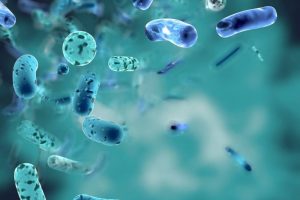
The following was originally published in The Hub.
Scientists from Johns Hopkins University and Medicine have developed a possible new antibiotic for a pathogen that is notoriously resistant to medications and frequently lethal for people with cystic fibrosis and other lung ailments.
The pathogen, called Mycobacterium abscessus, is related to a better-known bacterium that causes tuberculosis and leprosy but has recently emerged as a distinct species presenting most often as a virulent lung infection. The team of scientists from the Krieger School of Arts & Sciences’ Department of Chemistry and the School of Medicine’s infectious diseases department published their findings in the journal Communications Biology.
The technology is available for licensing through Johns Hopkins Technology Ventures.
The team has developed one of the first potential treatments of a bacterium that has no FDA-approved treatments and a cure rate less than 50%. Before the compound, called T405, can move closer to becoming a clinical treatment, researchers need to improve its pharmacological potency using a preclinical animal model of the infection.
“People die of this in our hospitals every week,” said Craig Townsend, a professor of chemistry who served as a principal investigator on the study along with Gyanu Lamichhane, an associate professor of medicine. “The data we have is very promising.”
Despite years of urgent calls for more studies to understand the bacteria and to explore possible treatments, researchers have been wary of experimenting with the most dangerous member of its Non-Tuberculosis Mycobacteria family.
“It’s still considered an emerging disease,” Lamichhane said. “There are now more NTM than tuberculosis cases in the United States. And this is the most virulent of all of them.”
The compound T405 has demonstrated a “superior potency against M. abscessus” over two commonly used antibiotics, the paper states. When combined with an existing medication called avibactam, T405 also demonstrated an ability to prevent the bacteria from developing resistance.
T405 was also well tolerated in mice and could be administered less than current treatments, exposing patients to fewer toxic side effects such as deafness.
People with depressed immune systems and lung diseases are also at risk of developing an infection that is most frequently found in cystic fibrosis patients. Transmission is not well understood, but the bacteria can be found in soil, dust, and water. It causes infections in lungs, soft tissue, and skin.
Current therapeutic guidelines for the infection require 12 to 18 months of multidrug therapy that have resulted in cure rates between 30-50%, underscoring the “need for new antibiotics with improved activity,” the paper states.